 |

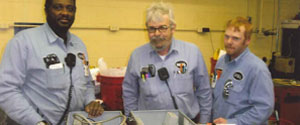
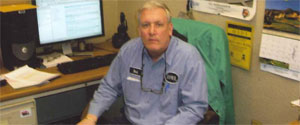
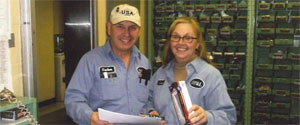
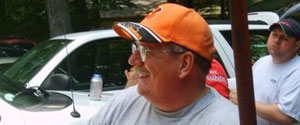


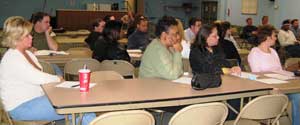







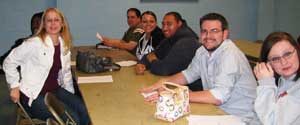




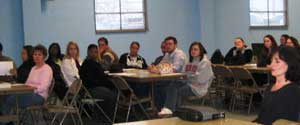


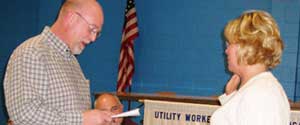

|
| Home |
| News & Events |
| About Us |
| Contact Us |
| Contracts & Bylaws |
| Safety & Health Care |
| Negotiations |
| Food Pantry Info |
| Forms |
| Jobs |
| Political |
| Links |
 |
| About Us |
| "United We Stand, Divided We Fall" and "Solidarity Forever, For The Union Makes Us Strong" These statements are as true today as they were in the 1930s and 1940s when unions were just beginning to form in our country. At DP&L, the idea of company unions was put to the test. It’s difficult more than a half century later to glean much information regarding this "union," but suffice it to say its name was DayPoLiCo Union. It is suspected that the company paid the union dues on behalf of its "members." Its purpose and activities were, of course, non-existent - it was after all, a company union! A trip through the door with an overtime complaint, a low pay gripe, or a claim of favoritism left one approximately where one began - "outside." It didn’t take long to tire of this nonsense and the employees began to flirt with the IBEW. They went so far as to schedule an election, but the IBEW pulled out under suspicious circumstances on the day of the vote. Undaunted, the employees insisted on organizing and they brought in the Utility Workers Organizing Committee. It wasn’t but a short while later that they were set to petition for another election. In 1939 - 1940, Bill Munger, a switchboard operator at the Millers-Ford (later called Tait Station) was approached to begin organizing the employees of the Dayton Power and Light Company. The trades targeted were the physical workers in the power plants and construction personnel. Bill Munger was successful in his efforts to gain enough interest to petition to the National Labor Relations Board for an election. Along around this time, the company and the company "union" came forward and insisted that clerical and sales employees should be in the representational election. The thought was to water down the vote and sink the unionizing effort. These added jobs to the proposed union required that the organizers get enough interest cards to warrant an election. The focus was on the maintenance and line personnel. There were approximately ten cards signed by clerical personnel. The organizers were able to gain signed cards from approximately 90% of the maintenance and line personnel. An election was held - and the rest, as they say, is history. The election was close - won by 25 - 30 votes. But the union was representative of all - production, maintenance, clerical and sales. On June 17, 1941 Local 175 became a UWOC chartered union. The first contract between Dayton Power & Light and Local 175 was partially negotiated by the union representatives, including the first president of Local 175, Bill Munger. The seven issues left unsettled were turned over to the War Labor Board, which was formed during the was years to resolve seven issues - wages, back pay, overtime distribution, vacation entitlements and sick time. Some 1½ years later, a contract was settled under the auspice of the UWOC. With this, Local 175 became the recognized union at Dayton Power & Light and the possessor of the first signed contract. It was some time after that the sales representatives were returned to their original unorganized status. Since then, Local 175 has represented both clerical workers as well as the production and maintenance workers at Dayton Power & Light. No earth shattering happenings occurred on a local level for the next decade. The new union, Local 175, was testing its wings. On a bigger scale, paralleling this time, many other unions were forming under the umbrella of UWOC - Locals 101, 103, 104, 105, 106, and 107 at Consumers Power, Michigan; Local 1 - 2 at Consolidated Edison, New York; Local 102, West Penn Power, Pennsylvania; Locals 369, 387 and 386, Boston Edison, Massachusetts; many various Locals (now called Locals 132, 170, 522 or 483, Southern California Gas, California; Local 223, Detroit Edison, Michigan; and on and on and on. The many unions which were formed during these early years under the UWOC umbrella, left to themselves, could well have floundered and fallen. It was the intention of the leaders of the UWOC that this no happen. Non-affiliate organizations were snipping and biting, trying to tear away a piece at a time from the UWOC fabric. Even some of the local unions themselves, concerned as they were with their immediate and separate problems, did not perceive the benefits that could be reaped from a coalition of forces pointed at the same goals. Suffice it to say, there was some diversity of purpose and a real possibility that this fragile network would collapse. Now was the time to cement the gains, to raise a flag for all to rally about, and set about laying the foundations upon which would be erected a free-standing and long-enduring organization, espousing the principles of unionism and having the strength to reach its goals. October 31, 1942, Pittsburgh, Pennsylvania. Upwards of 50 delegates representing 180 local unions gather to hear the gavel bang to order the first Constitutional Convention of the Utility Workers Organizing Council. The delegates worked for two days and hammered out the rules and selected leaders that would assure an orderly transition to the final step of organization. The first and last Constitutional Convention of the Utility Workers Organizing Council was adjourned. The next time they were to meet, in April 1946, they would be known as the Utility Workers Union of America, CIO. But much took place between these meetings. In the intervening period the UWOC saw an opportunity to greatly enhance the strength of this about to be created national union by the addition of a large block of members from the new, vibrant and progressive Brotherhood of Consolidated Edison Employees, and to this end, they entered into serious discussions with the leaders of this group. Ultimately they fashioned an alliance with a strength greater than the sum of its parts; a new national organization composed of all the local unions affiliated with the Utility Workers Organizing Committee and the Brotherhood of Consolidated Edison Employees. This they christened the "Utility Workers Union of America, CIO" and chartered this organization on August 1, 1945. In April 1946 in Atlantic City, New Jersey, the Utility Workers Union of America held its first Constitutional Convention. Representatives from Local 175 at this important convention were Herb Snead and Ed Ward. Here follows a historical chronology of Local 175. 1940 June 17, 1941 Local 175 was a chartered union under the UWOC. 1950s Built the Local 175 union hall at 2307 Embury Park Road, Dayton, Ohio. Moved into the new building January 23, 1959. DP&L was growing as a company and Local 175 was expanding its membership as the company grew. Contract negotiations which continued to improve the wages and working conditions of Local 175 members. 1960s Relatively quiet years. DP&L was in a growth mode, requesting and receiving rate hikes with the PUCO. Continued to operate and negotiat4e contract agreements to improve wages and working conditions. 1970s Struck the Dayton Power and Light Company in 1971. The st4ike was of short duration (approximately four weeks) - relationships with the company and the strikers were very amiable. Lay-off of approximately 18 employees (primarily from the gas division). Struck the Dayton Power and Light Company in 1977 (duration 90days). Federal Mediation and Conciliation Services (FMCS) participated in settlement of the strike. Implementation of RBO (Relationships by Objectives) process. The implementation was facilitated by the FMCS. RBO was a communications forum which established a method for management and union employees to discuss concerns and suggestions. The beginning of this decade was the end of the growth period and the company moved from this mode to one of austerity. Through this decade, wages and working conditions continued to be improved. 1980s Massive lay-off affecting approximately 600 Local 175 members. Approximately 250-300 were laid off; others were bumped from their jobs and required to find other positions they could fill, resulting in more "bumps." In 1986, Local 175 entered into a unique labor agreement with DP&L. This compacted agreement, called the Labor Compact, was ratified by the Local 175 membership and renewed in 1989. The Labor Compact philosophy is one which is unique to Local 175 and to labor in general. 1990s June 17, 1991 - Local 175 celebrated its 50th anniversary. As Local 175 continues to operate for the betterment of its union brothers and sisters, let us not forget to reflect upon the efforts and diligence of those members and officers who came before us. Hopefully this will be a time of reflection that statements such as "United We Stand, Divided We Fall," and "Solidarity Forever, For The Union Makes Us Strong" are as true today as they were in the 1930s and 1940s when unions were first beginning to form in this country. A fitting way to close is with the challenge given by George Meany in his retirement address, "Yours is a good labor movement. Now go out and make it better." |
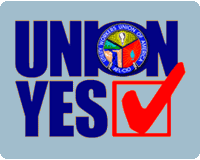 |




